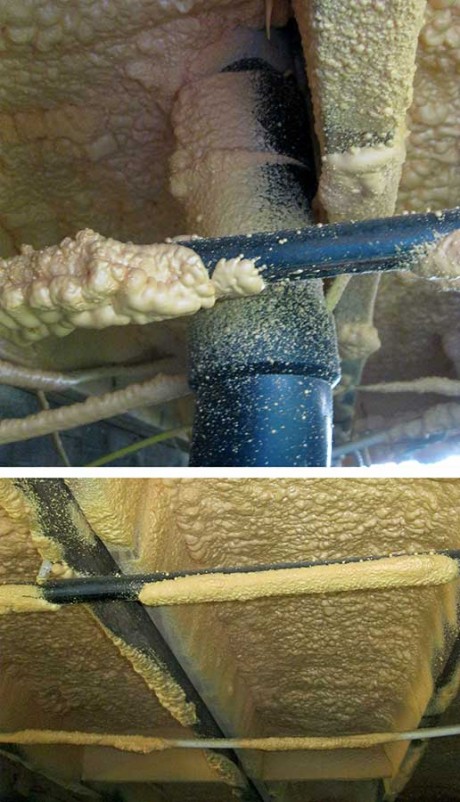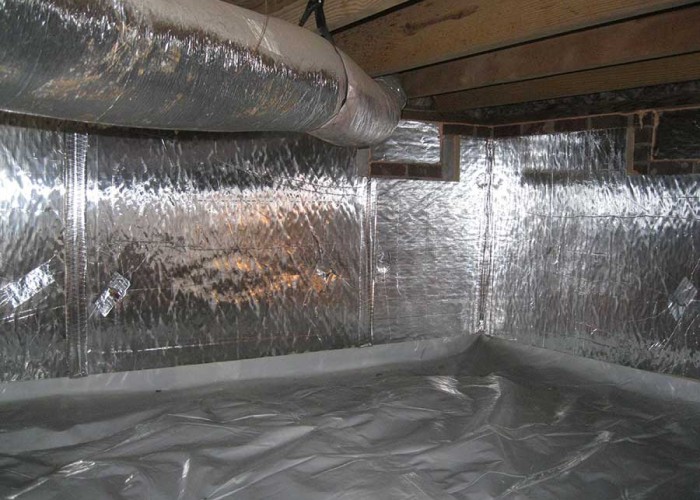Foaming a Crawl Space
Take the proper steps when considering spray foam insulation
By Hannah McKenzieQ:I live in an old home that was built without insulation. I have already sealed all of the holes in my attic and added insulation, which makes a big difference in reducing drafts in the winter and humidity in the summer. My next goal is to insulate under the floors, and spray foam looks like a great option. What do you think?
A: Upgrading a home can be so frustrating when there seem to be a multitude of methods and a huge range of prices for solving a problem. While spray foam can be an excellent choice versus batt or blown insulation, it is not a silver bullet. And in North Carolina, insulating a floor above a crawl space makes less of an impact on energy savings and improving comfort than what you’ve already done in the attic.
Spray foam options
Spray foam insulation is mixed at the job site using two chemical mixtures and then sprayed in place by professionals who are covered head to toe with protective suits. There are two basic types of spray foam insulation, and both provide air sealing and insulating qualities in one product.
Open-cell foam is commonly used in walls and ceilings of new North Carolina homes due to our mild climate and its lower cost than closed-cell foam. “Open” means it allows moisture transfer while restricting air transfer.
Closed-cell foam is less frequently used due to its higher cost, but it insulates more per inch of thickness than open-cell foam because it limits both moisture and air transfer. Another benefit is the reduced thickness helps the foam stick (despite gravity) when sprayed on challenging surfaces like under-roof sheathing or crawl space walls.
Industry experts recommend installing spray foam insulation in the floor system only if a crawl space is controlled to be extraordinarily dry (see our story Closing the Crawl Space).
Another option, shared at crawlspaces.org, is to have rigid foam board or closed-cell spray foam insulating the foundation walls with no additional insulation in the floor system. Both materials can achieve the same outcome, so be sure to investigate contractor options, as price and quality can vary in your area. In an existing crawl space, spray foam materials and labor may be less expensive than rigid foam board insulation, which can be challenging to maneuver and install under an existing home.
Safety measures
One concern with products such as spray foam is volatile organic compounds (VOCs) off-gassing, meaning the smelly chemicals in the air may cause headaches, nosebleeds or other health concerns. The American Chemistry Council recommends keeping the home’s heating and cooling system off and sealed for 24 hours after spray foam installation to let the foam cure and off-gas. In rare cases, an improperly mixed or installed spray foam will cause irreparable damage to a home, which is why choosing a reputable installer is extremely important.
As with all home improvement projects, getting multiple detailed quotes and finding a good contractor are keys to success, particularly when prices can range from $2,000 to $10,000 for a 2,000-square-foot house. Hearing from customers who have gone through the experience before is another way to ensure your home receives the caliber of work it deserves.
-
All about crawl spaces
-
Share this story:




